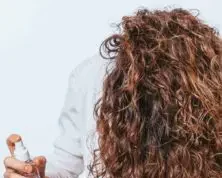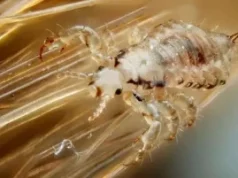Home hair colouring experiments can be entertaining, but they frequently end with colour stains and splashes in unexpected places.
Hair dyes are one of the most difficult substances to remove off surfaces since they are made to persist as long as possible. For the most effective techniques to remove hair dye from walls, keep reading.
Hair colour stains require some work to get out, although bleach, toothpaste and nail polish remover typically work nicely on tiled bathroom walls.
Hair dye stains on walls can be a common occurrence, especially if you regularly dye your hair at home. The pigments in hair dyes can be stubborn and challenging to remove, but with the right techniques and products, you can effectively clean and restore your walls to their original condition. In this guide, we’ll explore what hair dyes are made of, followed by practical steps on how to remove hair dye stains from walls. Lastly, we’ll address some frequently asked questions to help you deal with this pesky problem.
What’s in Hair Dyes?
Hair dyes consist of various chemical compounds that work together to alter the color of your hair. The primary ingredients in most hair dyes include:
a. Pigments: These are the colorants that give hair dyes their vibrant hues. Pigments can be synthetic or natural, and they penetrate the hair shaft to change its color.
b. Oxidizing Agents: These are typically found in permanent hair dyes and help to initiate the color-forming process. They also contribute to the longevity of the hair color.
c. Alkalizing Agents: These raise the pH of the hair, which allows the hair dye to penetrate the cuticle and deposit the color inside the hair shaft.
d. Conditioners: Hair dyes often contain conditioning agents to improve the texture and shine of the hair after coloring.
How to Remove Hair Dye from Walls:
Before you begin cleaning the hair dye stains, it’s essential to consider the type of paint on your walls. Always test any cleaning solution on a small, inconspicuous area to ensure it won’t damage the paint. Here’s a step-by-step guide to removing hair dye stains from walls:
Step 1: Act Quickly – The sooner you address the stain, the better your chances of complete removal.
Step 2: Gather Supplies – You’ll need the following items:
- Clean, white cloth or sponge
- Mild dish soap or liquid detergent
- Baking soda or non-gel toothpaste (with baking soda)
- Hydrogen peroxide
- Rubbing alcohol
- Cotton balls or swabs
Step 3: Clean with Soap and Water – Start by gently scrubbing the stain with a mixture of mild dish soap and water. Use the cloth or sponge in a circular motion, taking care not to spread the stain further.
Step 4: Baking Soda/Toothpaste – For stubborn stains, make a paste using baking soda or non-gel toothpaste with baking soda and a small amount of water. Apply the paste to the stain and let it sit for a few minutes before gently scrubbing it off.
Step 5: Hydrogen Peroxide – If the stain persists, dampen a cotton ball or swab with hydrogen peroxide and gently dab the stained area. Avoid excessive rubbing, as it may damage the paint.
Step 6: Rubbing Alcohol – As a last resort, try rubbing alcohol. Dampen a clean cloth with rubbing alcohol and gently blot the stain. Rinse the area with water afterward.
Step 7: Repaint (if necessary) – If the stain remains despite your efforts, you may need to touch up the area with matching paint.
How to Remove Hair Dye on Tiled Bathroom Walls

Removing hair dye from tiled bathroom walls requires a delicate approach to avoid damaging the tiles. Follow these steps to effectively remove the stain:
- Act Quickly: The sooner you address the stain, the easier it will be to remove.
- Gather Supplies: You’ll need the following items:
- Clean, white cloth or sponge
- Mild dish soap or liquid detergent
- Baking soda or non-gel toothpaste (with baking soda)
- Hydrogen peroxide
- Rubbing alcohol
- Soft-bristled brush (like an old toothbrush)
- Clean with Soap and Water: Start by cleaning the stained area with a mixture of mild dish soap and water. Gently scrub the stain using the cloth or sponge in a circular motion.
- Baking Soda/Toothpaste: For more stubborn stains, make a paste using baking soda or non-gel toothpaste with baking soda and a small amount of water. Apply the paste to the stain and let it sit for a few minutes before gently scrubbing it off with the soft-bristled brush.
- Hydrogen Peroxide: If the stain persists, dampen a clean cloth with hydrogen peroxide and gently dab the stained area. Avoid excessive rubbing to prevent damage to the tiles.
- Rinse Thoroughly: After removing the hair dye, rinse the area thoroughly with water to remove any remaining cleaning agents.
- Dry and Inspect: Use a clean, dry cloth to pat the area dry, and inspect to ensure the stain is completely gone.
Also Read: Best Korean Hair Dye in 2023
How to Remove Hair Dye from Wallpaper
Removing hair dye stains from wallpaper requires a cautious approach to avoid causing further damage to the delicate surface. Follow these steps to tackle the problem:
- Act Quickly: The faster you attend to the stain, the better your chances of successful removal.
- Test on Inconspicuous Area: Before attempting to remove the stain, test your cleaning solution on a small, inconspicuous area of the wallpaper to ensure it doesn’t cause discoloration or damage.
- Gather Supplies: You’ll need the following items:
- Clean, white cloth or sponge
- Mild dish soap or liquid detergent
- Baking soda or non-gel toothpaste (with baking soda)
- Hydrogen peroxide (for washable wallpaper)
- Rubbing alcohol (for vinyl wallpaper)
- Clean with Soap and Water: Start by gently dabbing the stained area with a cloth or sponge soaked in a mixture of mild dish soap and water.
- Baking Soda/Toothpaste: For tougher stains on washable wallpaper, create a paste using baking soda or non-gel toothpaste with baking soda and a small amount of water. Apply the paste to the stain and let it sit for a few minutes before gently scrubbing it off.
- Hydrogen Peroxide/Rubbing Alcohol: For stubborn stains on washable wallpaper, you can try using hydrogen peroxide. For vinyl wallpaper, use rubbing alcohol. Apply these solutions with a cloth and gently blot the stain.
- Rinse Carefully: After removing the stain, dampen a clean cloth with water and gently wipe the treated area to remove any residue from the cleaning agents.
- Dry and Inspect: Use a dry, clean cloth to pat the area dry and inspect the wallpaper to ensure there is no damage or discoloration.
Also Read: Best Korean Hair Dye in 2023
Conclusion
Hair dye stains can be tricky to remove from various surfaces like tiled bathroom walls and wallpaper. Acting promptly and using gentle cleaning solutions are key to successful stain removal. Remember to test any cleaning agent on an inconspicuous area first to prevent further damage. If the stain persists or you are unsure about the cleaning process, consider seeking professional assistance to avoid potential damage to your walls or wallpaper.
FAQs:
Can I use bleach to remove hair dye stains from walls?
It’s generally not recommended to use bleach on walls as it can damage the paint and may cause discoloration. Stick to the methods mentioned above for safer and more effective results.
Q2: Will vinegar remove hair dye stains?
Vinegar may have limited success in removing hair dye stains, but it’s not the most reliable option. It’s best to use the methods outlined in the guide.
Q3: How can I prevent hair dye stains on walls in the future?
To prevent stains, take precautions like covering surfaces near the dyeing area with plastic sheets or old towels. Additionally, wear old clothing and gloves during the hair dyeing process to minimize accidental spills.
Remember, dealing with hair dye stains on walls requires patience and gentle cleaning. Always test any cleaning solution on an inconspicuous area first, and if the stain persists, consider seeking professional help or repainting the affected area.






